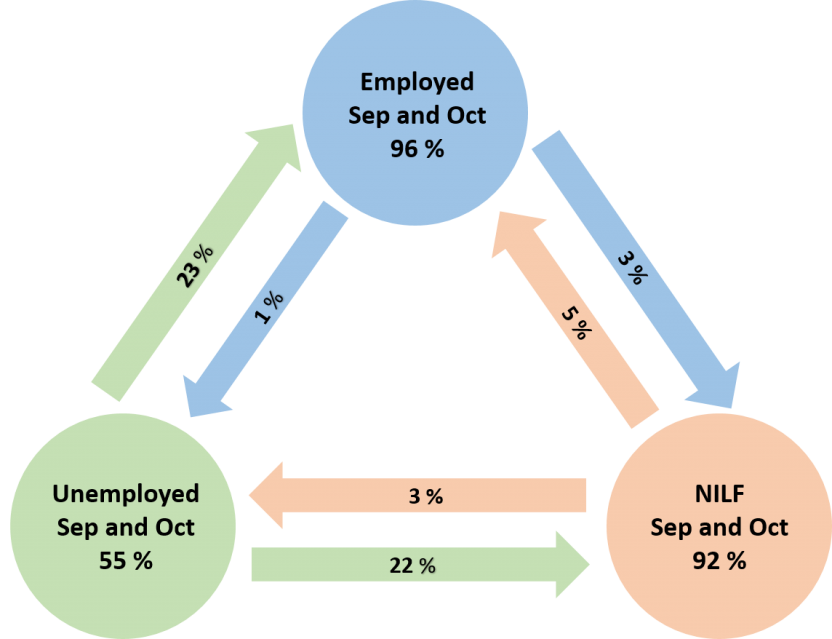Participation rate, Seasonally adjusted
[["Oct-11","Nov-11","Dec-11","Jan-12","Feb-12","Mar-12","Apr-12","May-12","Jun-12","Jul-12","Aug-12","Sep-12","Oct-12","Nov-12","Dec-12","Jan-13","Feb-13","Mar-13","Apr-13","May-13","Jun-13","Jul-13","Aug-13","Sep-13","Oct-13","Nov-13","Dec-13","Jan-14","Feb-14","Mar-14","Apr-14","May-14","Jun-14","Jul-14","Aug-14","Sep-14","Oct-14","Nov-14","Dec-14","Jan-15","Feb-15","Mar-15","Apr-15","May-15","Jun-15","Jul-15","Aug-15","Sep-15","Oct-15","Nov-15","Dec-15","Jan-16","Feb-16","Mar-16","Apr-16","May-16","Jun-16","Jul-16","Aug-16","Sep-16","Oct-16","Nov-16","Dec-16","Jan-17","Feb-17","Mar-17","Apr-17","May-17","Jun-17","Jul-17","Aug-17","Sep-17","Oct-17","Nov-17","Dec-17","Jan-18","Feb-18","Mar-18","Apr-18","May-18","Jun-18","Jul-18","Aug-18","Sep-18","Oct-18","Nov-18","Dec-18","Jan-19","Feb-19","Mar-19","Apr-19","May-19","Jun-19","Jul-19","Aug-19","Sep-19","Oct-19","Nov-19","Dec-19","Jan-20","Feb-20","Mar-20","Apr-20","May-20","Jun-20","Jul-20","Aug-20","Sep-20","Oct-20","Nov-20","Dec-20","Jan-21","Feb-21","Mar-21","Apr-21","May-21","Jun-21","Jul-21","Aug-21","Sep-21","Oct-21"],[[65.4077235],[65.352461],[65.1069422],[65.3078976],[65.1025256],[65.3387298],[65.0505817],[65.352979],[65.0948928],[65.0624756],[65.0196724],[65.3244651],[65.1822235],[64.9452137],[65.0388025],[65.2767131],[65.2041306],[65.0788476],[65.1423545],[65.0328592],[65.0854239],[64.872502],[64.9420533],[64.8469096],[64.8339641],[64.6176805],[64.449154],[64.5673461],[64.5516271],[64.7461067],[64.6687068],[64.5725713],[64.6850692],[64.7717039],[64.6536913],[64.658824],[64.6468193],[64.5409693],[64.6232322],[64.7403861],[64.8878304],[64.8611865],[64.7985495],[64.8611547],[64.8217405],[65.0931767],[64.9326645],[64.9832495],[65.1533733],[65.2292104],[65.1183174],[65.2283855],[64.9870848],[64.9385257],[64.8958817],[64.8727345],[64.9058117],[64.9632491],[64.6625028],[64.4932265],[64.5278012],[64.7119764],[64.7857904],[64.6700515],[64.6848452],[64.9047947],[64.9450622],[64.9739416],[65.1257839],[65.1770009],[65.3012795],[65.3238119],[65.2426769],[65.5015302],[65.7579391],[65.7642067],[65.6646491],[65.587498],[65.6231945],[65.4537973],[65.7155106],[65.5415035],[65.6390187],[65.4201363],[65.4938544],[65.6688381],[65.6188499],[65.7228192],[65.5507831],[65.6954315],[65.9099075],[66.0341773],[66.0410674],[66.0569479],[66.1533638],[66.0702116],[65.8912207],[65.909203],[65.8691007],[66.0282414],[65.8650791],[65.8570885],[63.5743707],[62.6289071],[64.0613947],[64.6623746],[64.9505309],[64.792646],[65.6655325],[66.0349011],[66.0378625],[66.0419627],[66.0599132],[66.3033127],[65.9646839],[66.2416305],[66.241971],[66.0294874],[65.1911999],[64.5228704],[64.6535719]],[[72.0793814],[72.0340771],[71.8145278],[72.1434226],[71.7938465],[71.7645396],[71.6810869],[71.7665592],[71.5987651],[71.5055344],[71.5959345],[71.808906],[71.756131],[71.4685088],[71.715702],[71.921122],[71.6749537],[71.5286649],[71.4792685],[71.5617205],[71.6239635],[71.2763053],[71.332529],[71.19102],[71.2068837],[71.0196422],[70.8943835],[70.8344621],[70.7175563],[70.925016],[71.01058],[70.693058],[70.8939731],[71.009139],[70.8824278],[70.7321574],[70.8391447],[71.0811157],[70.8430917],[71.0821217],[71.1903764],[71.2814171],[71.0751833],[71.0400784],[70.8831605],[71.0522937],[70.9493424],[70.9408753],[71.0955196],[70.9404922],[70.9166536],[71.2967996],[70.7326487],[70.7703646],[70.5277688],[70.6508317],[70.412452],[70.6157375],[70.4479171],[70.0712007],[70.2421056],[70.3362126],[70.5324326],[70.1892634],[70.3770374],[70.4711251],[70.62657],[70.6107228],[70.5863715],[70.8105295],[70.7911821],[70.7351539],[70.5777095],[70.927178],[71.104235],[71.2087003],[70.973693],[70.8027033],[70.9053097],[70.7409861],[70.9914469],[70.9767701],[71.0742757],[70.7291323],[70.7938881],[71.0473644],[70.9662561],[70.9761747],[70.7122511],[70.941097],[70.9325518],[71.5261213],[71.3435141],[71.323098],[71.3390219],[71.1304062],[70.8409476],[70.9286173],[70.8618897],[70.759309],[70.7307762],[70.7053471],[68.8281833],[67.9773477],[69.1465669],[69.6905174],[69.9033037],[69.6656698],[70.6923334],[70.9819783],[70.9570954],[71.1309361],[70.8972194],[70.9185621],[70.7817028],[70.9338788],[71.0294261],[70.8017321],[70.0536665],[69.2385222],[69.5120841]],[[58.9291077],[58.8634525],[58.5919677],[58.6684214],[58.6029036],[59.0967875],[58.6090782],[59.1215032],[58.774996],[58.8014065],[58.6288817],[59.022643],[58.7939968],[58.6066822],[58.5515692],[58.8218613],[58.9187252],[58.8146374],[58.987797],[58.6918995],[58.7350629],[58.6545822],[58.7386316],[58.6900496],[58.6521316],[58.4107102],[58.2032404],[58.4935332],[58.5754007],[58.7568198],[58.5222546],[58.6414222],[58.6690146],[58.7291154],[58.6206726],[58.7774029],[58.6512538],[58.2097839],[58.6031925],[58.6031432],[58.7892842],[58.6495385],[58.7267628],[58.8848331],[58.9599619],[59.331513],[59.1165307],[59.225387],[59.4119511],[59.7123208],[59.51877],[59.3685111],[59.4393774],[59.307978],[59.4592515],[59.29582],[59.5917463],[59.5092002],[59.081007],[59.1126149],[59.0161305],[59.2876235],[59.2438238],[59.3471093],[59.1947598],[59.5357899],[59.4649761],[59.536994],[59.8587959],[59.7437467],[60.0072135],[60.1061876],[60.0990688],[60.2710157],[60.604353],[60.5155056],[60.5460895],[60.5589796],[60.5297879],[60.3551492],[60.6273374],[60.2997282],[60.3972849],[60.300222],[60.3829944],[60.4826871],[60.4631157],[60.6572946],[60.5733989],[60.6363964],[61.0661403],[60.7380389],[60.9278628],[60.9794517],[61.1541392],[61.1926079],[61.1209621],[61.0726668],[61.0590795],[61.4710487],[61.1788972],[61.1883973],[58.5152754],[57.4788405],[59.164954],[59.8211298],[60.182147],[60.1013229],[60.8265673],[61.2730668],[61.3032178],[61.143802],[61.4038329],[61.8608306],[61.3283104],[61.7256628],[61.6346948],[61.4368967],[60.511818],[59.9848221],[59.9782231]]]
[]
[{"axis_id":"0","tick_interval":"6","axis_min":"","axis_max":"","axis_title":"","precision":-1,"axis_units":"","tooltip_units":"","table_units":"","data_unit_prefix":"","data_unit_suffix":"","reverse_axis":false}][{"axis_id":"0","tick_interval":"5","axis_min":"55.0","axis_max":"75.0","axis_title":"%","precision":"1","table_units":"(%)","tooltip_units":"(%)","axis_units":"","data_unit_prefix":"","data_unit_suffix":"","reverse_axis":false},{"axis_id":"1","tick_interval":"","axis_min":"","axis_max":"","axis_title":"","precision":"","table_units":"(%)","tooltip_units":"(%)","axis_units":"","data_unit_prefix":"","data_unit_suffix":"","reverse_axis":false}]